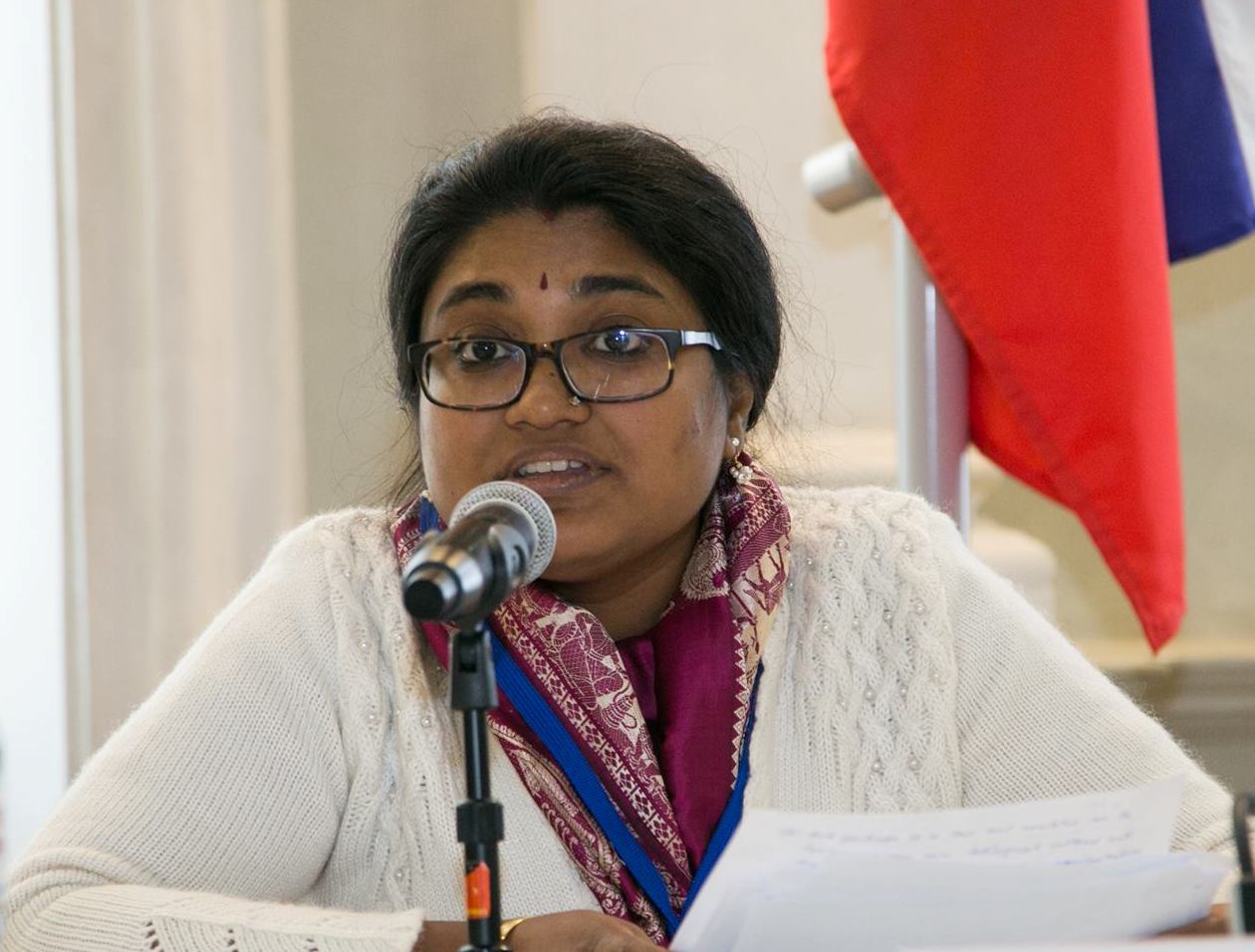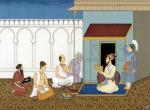Sister Nivedita (1867-1911), one of the foremost disciples of Swami Vivekananda, is well-known for her contribution to the Indian national movement. That she inspired the Indian youth of her times to take up the national cause through her writings and speeches is well-documented. A substantial portion of her writings dwell on what can be called as ‘civic nationalism’. What she penned down for a nation under colonial subjugation still holds true for an independent India that is 70 years old now.
Defining the Civic Ideal: the Family and the Civitas
Nivedita wrote, “The civic life…is that which pertains to the community as a whole, that community — whether of nation, province, or township — whose unity transcends and ignores that of the family…. The civic spirit embodies the personal and categorical form of such ideals as those of national unity…. Its creative bond is that of place, the common home — as distinguished from blood, the common kin — that common home, whose children are knit together to make the civitas, the civic family, rising in its largest complexity to be the national family.”1 If we analyse this definition, the following principle emerges: the civic entity is higher and greater than the family. Let us examine the issue more closely.
As human beings, we tend to organise ourselves into collective units. The family is the most immediate collective unit, where people are united by virtue of a common blood. Blood ties are possibly more powerful than any other in this world. The kind of affection that one is likely to feel for a child one has given birth to is generally absent when one deals with children born of other people, no matter how well-meaning we may be towards them. India has for long recognised the family as the foundation of society. But that recognition is not based upon the narrow interest of blood and kin.
Our conception of family has two important dimensions. Firstly, the family is a space where we learn to live collectively ignoring differences and also learn how not to aggrandise our little selves. Thus, Nivedita remarked, “The family is, in all countries and all ages, the natural sphere for the working-out of the ethical struggle, with its results in personal development. The happiness of families everywhere depends, not on the subordination of this member or that, but on the mutual self-adjustment of all.”2 Secondly, the ultimate aim of the family is to support and sustain society by bringing up individuals of high moral character who would be an asset for the society. Thus, even when the family ideal has been developed, it has been developed with the ultimate aim of nurturing the larger society through the family. At the same time, this ideal also takes care of the personal affective needs of individuals.
When Nivedita champions the cause of a civitas that “transcends and ignores” the family, she is not talking about the suppression and destruction of the family ideal, but its channelisation to a larger end—that is, the cause of the greater collective unit of the civitas. If a person already recognises the ideal of unselfishness which is the moral basis of the family, nothing will hinder that person from re-directing this moral impulse towards a higher unit of collective organization: “High moral aims are almost always mutually coherent. Weakening of family ties will not go hand in hand, in a modern community, with growth of civic integrity. Both the progressive idea of the civitas, and the conservative idea of the family, are apt to suffer at once from that assumption of the right to enjoyment…”3 Once the need for enjoyment is asserted at the expense of collective good, both the institutions of family and civitas will collapse. In fact, the individual will also collapse eventually if this attitude creeps in that everything we have around us, every relation we enter into is meant for our enjoyment without reckoning the fact that everything in this creation is sustained by a process of ‘give and take’ (a fact that was recognised and so aptly symbolised in the Vedic rite of the yajna).
On the other hand, this civic ideal also calls us to heed more the larger cause when it comes to a situation that entails a personal benefit to the family at the expense of social duties. Hence, the civic entity is to be given a higher place when our family demands us to become selfish or dishonest. Eventually, we also need to move beyond the bare minimum. An orphan child out on the street is equally important as our own children—the blood connection should not grant any special prerogative, it has to be totally ignored in this context. Nivedita thus aptly pointed out that “…public spirit is the expression of that character which is born of constantly placing the ego, with the same intensity as in the family, in a more complex group”4, and the “problem of the age, for India,… is to supersede the family, as a motive, and even as a form of consciousness, by the civitas, the civic and national unity.”5
Defining the Civic Ideal: Aspects of the City
Sister Nivedita called cities “the schools of nationality”6, because it is “in the service of the small unit that the power to become a critical factor in the larger is for the most part won.” A fractional unit can never be a civic unity; the ‘city’, by virtue of its all-encompassing character, qualifies for being one. It transcends not only the family but also smaller communitarian identities. Civic life is a great unifier, and it is the city that effectively dissolves differences of caste, creed, language, region, gender. It is more cosmopolitan, and a truer representative of national unity, than any other space. She describes the ideal city as “the meeting-place of shepherd and peasant, of merchant and artificer, of priest and pilgrim, of court and camp. It is the centre towards which converge streams that rise in all the quarters of the globe. It is a market-place and an exchange, a focus of wealth and industry, a hall of international council, and the quadrangle of a world-university.”7
The fundamental need of the civic spirit is that “we should think of our city as a being, a personality, sacred, beautiful, and beloved.”8 This is expressed sharply, according to her, in the epic poem Ramayana — both in the depiction of Ayodhya and in that of Lanka. Particularly touching is the episode of Hanuman’s first meeting with the guardian angel of the kingdom of Lanka. According to Nivedita, “There is nothing, in all Indian literature, of greater significance for the modern Indian mind, than the scene in which Hanuman contends in the darkness with the woman who guards the gates, saying, in muffled tones, “I am the city of Lanka”.9 This civic spirit, therefore, can be found in the ancient Indian past as well, albeit expressed in ancient terms.
The Place of Women
The issue of women in the context of civic life is significant on various counts. Firstly, the active aid and cooperation of women is indispensable for the development of civic nationalism—whether they provide this support as mothers and wives or as individual citizens. “It is they [the Indian women of the days to come] who must consecrate themselves before Her [Motherland India], touching Her feet with their proud heads, and vowing to Her their own, their husbands’, and their children’s lives. Then, and then only will She stand crowned before the world. Her sanctuary today is full of shadows. But when the womanhood of India can perform the great aarati of nationality, that temple shall be all light…”10
Secondly, according to Nivedita, an active involvement in the cause of the nation is vital for women’s own regeneration: “To work, to suffer, and to love, in the highest spheres; to transcend limits; to be sensitive to great causes; to stand transfigured by the national righteousness; this is the true emancipation of woman, and this is the key to her efficient education.”11
So far, there may be no room for disagreement. The problem arises with the third issue involved — how to balance old ideals with the needs of the new age? At the threshold of the modern age, India had been beset with this problem, and it manifested ever more sharply with regard to the condition of women. How to prepare Indian women for the demands of the modern ideal without robbing them of the purity and gentleness that have been held to be the hallmark of Indian women? How to prepare Indian women for the new civic life, given their importance in the home and hearth? This dilemma strongly plays out in the tug of war between the family and the civitas — at least apparently so. “One factor…is the impracticability of the family as their main career for some of the most vigorous and intelligent of women. These are thrown back upon the civitas for the theatre of their activities, and the material of their mental and emotional development.”12
A significant clue lies in the last phrase, “mental and emotional development”. The key idea is self-development through self-sacrifice—whether one chooses family life as one’s arena or civic life. Nivedita pointed out, “…we may take it as an axiom that the ethics of civitas and family, so far as woman is concerned are never really defiant of each other; that neither battens on the decay of its fellow; but that both alike suffer from the invasions of selfishness, luxury and extravagance; while both are equally energised, by all that tends to the growth of womanly honour and responsibility in either field.”13
When it comes to women, we need to work out for ourselves that form which suits us best, keeping the ideal in mind. But arriving at a model whereby women could become active participants in the national process is an imperative that we cannot afford to ignore. Referring to her own days in India, Nivedita had remarked, “Daily the life of our Indian womanhood is shrinking. Day by day, their scope is being lessened. Unless we can capture for them the new world of expression, they will steadily continue to lose more and more of the world they had. If Sita and Savitri are ever to be born of Indian mothers, we must create new types for them, suited to the requirements of the modern age.”14 The only warning for modern-day activism would be: we now need to shift our focus from the discourse of rights to the discourse of responsibilities — it is in a balance between the two that lies our true freedom and empowerment.
Educating the Child
The only obvious way of rousing this sense of civic nationalism is through education in its broadest sense. Sister Nivedita wrote, “National feeling is, above all, feeling for others. It is rooted in public spirit, in a strong civic sense. But these are only grandiloquent names for what may be described as organized unselfishness. The best preparation for nation-making that a child can receive is to see his elders always eager to consider the general good rather than their own. A family that willingly sacrifices its own interests to those of the village or the street or the town; a household that condones no act of dishonesty on the part of public servants out of consideration for its own comfort or safety…—these are the best and strongest education for nation-making that a child can have.”15 How do we fare today on these counts? It is for us to judge ourselves candidly.
While Nivedita emphasised the need for concrete examples around the child, it is also necessary that we “surround our children with the thought of their nation and their country. The centre of gravity must lie for them outside the family.” 16 As discussed above, this is not an injunction against the institution of the family, she herself recognised the importance of the family ideal in its function for the moral development of an individual. This is, on the contrary, an appeal to recognize the moral principle common in both the ideals, family and civic—the principle of unselfishness—and to give it a broader arena for unfolding.
Again: “If we would impart a love of country, we must give a country to love. How shall [people] be enthusiastic about something they cannot imagine?” 17 “Thus the conception of nationality…must be realised by us, in the first place, as a result of the study of the history of our own nation…The civic sense, in the same way, must be reached by a study of or own cities, their positions and the history of their changes from age to age.” 18
Conclusion
Three points can be highlighted in conclusion. The development of civic nationalism is impossible without the simultaneous development of the spirit of collective action: “What is required for the manifestation of a strong conscious national life? Is love of place, pride of birth, or confidence in past culture all sufficient? Neither any, nor yet all of these can ever be enough. In addition there must be the irresistible mind of co-ordination, the instinct of co-operation, the tight-knit discipline of a great brotherhood.”19
Secondly, when it comes to the modern civic ideal, it is only the form that is new, the principle behind it is ancient and even universal. Swami Vivekananda, the modern representative of the ancient ideals of India, had aptly put the ideal in words, “We must die, that is certain; let us die then for a good cause. Let all our actions — eating, drinking, and everything that we do — tend towards the sacrifice of our self. You nourish your body by eating. What good is there in doing that if you do not hold it as a sacrifice to the well-being of others? You nourish your minds by reading books. There is no good in doing that unless you hold it also as a sacrifice to the whole world. For the whole world is one… .” 20
Finally, if we have to embrace the ideal of self-sacrifice for others, then why not dedicate ourselves to universalism instead of patriotism? The reason why patriotism should take precedence is this: “Only by the love of our own people can we learn the love of humanity” It is easy to talk glibly about universalism, but one “cannot be a cosmopolitan unless one be a nationalist. And to become a nationalist, we must extend our narrow self.” 21
End Notes
1. The Complete Works of Sister Nivedita, Advaita Ashrama, Calcutta, 1982, vol. 4, p. 241.
2. Ibid., p. 245.
3. Ibid., p. 242.
4. Ibid., p. 213.
5. The Complete Works of Sister Nivedita, vol. 5, p. 221.
6. The Complete Works of Sister Nivedita, vol. 4, P. 207.
7. Ibid., p. 231.
8. Ibid., p. 210.
9. Ibid., p. 210.
10. Ibid., p. 362.
11. The Complete Works of Sister Nivedita, vol. 5, p. 27.
12. The Complete Works of Sister Nivedita, vol. 4, p. 239.
13. Ibid., p. 242.
14. The Complete Works of Sister Nivedita, vol. 5, p. 223.
15. The Complete Works of Sister Nivedita, vol. 4, pp. 347-48.
16. Ibid., p. 348.
17. Ibid., p. 367.
18. Ibid., p. 365.
19. Ibid., p. 257.
20. The Complete Works of Swami Vivekananda, Advaita Ashrama, Calcutta, 1964, vol. 3, p. 446.
21. The Complete Works of Sister Nivedita, vol. 5, p. 244.
(Views expressed are of the author and do not necessarily reflect the views of the VIF)
Image Source: http://www.vivekananda-ds.org/media.php










Post new comment